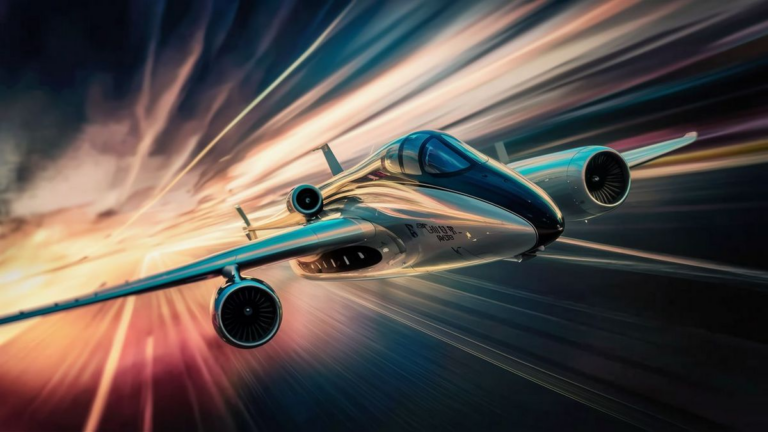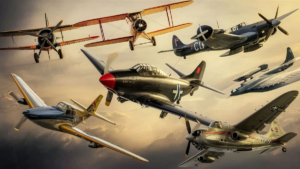When it comes to pushing the boundaries of speed and technology, the aviation industry has consistently been at the forefront. The quest for the title of the “fastest plane in the world in mph” has led to the development of remarkable aircraft that defy the limits of what was once considered possible.
Modern aviation enthusiasts are fascinated by the incredible engineering feats that have given rise to planes capable of reaching unprecedented speeds. In this article, we will explore some of the fastest planes in the world, measured in miles per hour (mph), highlighting their unique features and contributions to aviation history.
The Need for Speed
Human fascination with speed is not a new phenomenon. From the early days of aviation, pilots and engineers sought to break speed barriers, aiming to achieve milestones that would redefine the possibilities of air travel. The need for faster and more efficient planes has been a driving force behind technological advancements in the aviation industry.
Unveiling the Speed Demons
Among the contenders for the title of the fastest plane, the North American X-15 holds a special place in aviation history. Developed in the 1950s, this experimental aircraft set the world record for the fastest speed ever recorded by a manned, powered aircraft. Reaching a staggering speed of Mach 6.72 (about 4520 mph), the X-15 pushed the boundaries of human achievement.
Fast forward to the 21st century, and the title of the fastest plane is hotly contested by military aircraft. The Lockheed SR-71 Blackbird, known for its sleek design and reconnaissance capabilities, is another iconic speedster. Capable of reaching speeds exceeding Mach 3, this Cold War-era plane remains a symbol of engineering excellence.
Supersonic Marvels
Supersonic flight has been a major milestone in aviation, and the Concorde remains a symbol of that achievement. Although not designed for military purposes, the Concorde was a commercial supersonic jet that could travel at speeds of Mach 2.04 (around 1354 mph). Operating from 1976 to 2003, the Concorde provided a unique and luxurious travel experience for those who could afford it.
Additionally, the modern era has seen the emergence of the Northrop Grumman B-2 Spirit, a strategic bomber designed for stealth and high subsonic speeds. While not breaking into the realm of supersonic flight, the B-2 Spirit showcases the importance of speed in strategic military operations.
Pushing the Envelope
As we delve into the world of aviation speed, it’s important to recognize that ongoing advancements continue to redefine what is possible. Experimental projects and cutting-edge technologies are pushing the envelope of speed and performance, ensuring that the quest for the fastest plane in the world remains an ever-evolving journey.
In Conclusion
From the groundbreaking X-15 to the iconic SR-71 Blackbird and the supersonic Concorde, the race for the fastest plane in the world has fueled innovation and captivated the imaginations of aviation enthusiasts. As we look towards the future, the pursuit of speed continues to drive the development of new and exciting aircraft, solidifying aviation’s place as a testament to human ingenuity.
Fuel Efficiency and Speed
While speed has been a paramount focus in aviation history, the importance of fuel efficiency is gaining prominence. Modern aircraft designers are not only aiming for record-breaking speeds but are also exploring ways to achieve these speeds with optimal fuel consumption. The balance between speed and fuel efficiency is becoming a crucial factor in shaping the next generation of high-performance planes.
Frequently Asked Questions
| Question | Answer |
|---|---|
| 1. What is the current fastest plane in mph? | The current fastest plane is classified, with military aircraft often leading in top speeds. Specific details might not be disclosed due to security reasons. |
| 2. How do engineers enhance the speed of aircraft? | Engineers enhance speed through aerodynamic advancements, improved engine efficiency, and lightweight materials. These factors collectively contribute to pushing the limits of aircraft speed. |
| 3. Is speed the only factor considered in aircraft design? | No, modern aircraft design emphasizes a balance between speed, fuel efficiency, safety, and environmental considerations. The integration of these factors is crucial for the overall performance and sustainability of an aircraft. |
Evolution of Materials
The quest for faster planes has driven innovations in materials used in aircraft construction. Advanced composites, carbon-fiber-reinforced materials, and alloys are continuously evolving to withstand the extreme conditions that high-speed flight imposes. The evolution of materials is a key aspect influencing the design and capabilities of contemporary speed-focused aircraft.
Environmental Impacts
As aviation technology advances, there is an increasing awareness of the environmental impacts of high-speed flight. Researchers and engineers are exploring sustainable aviation solutions to mitigate the ecological footprint associated with faster planes. Balancing speed with eco-friendly practices is becoming a pivotal consideration in the development of future aircraft.
See also:






